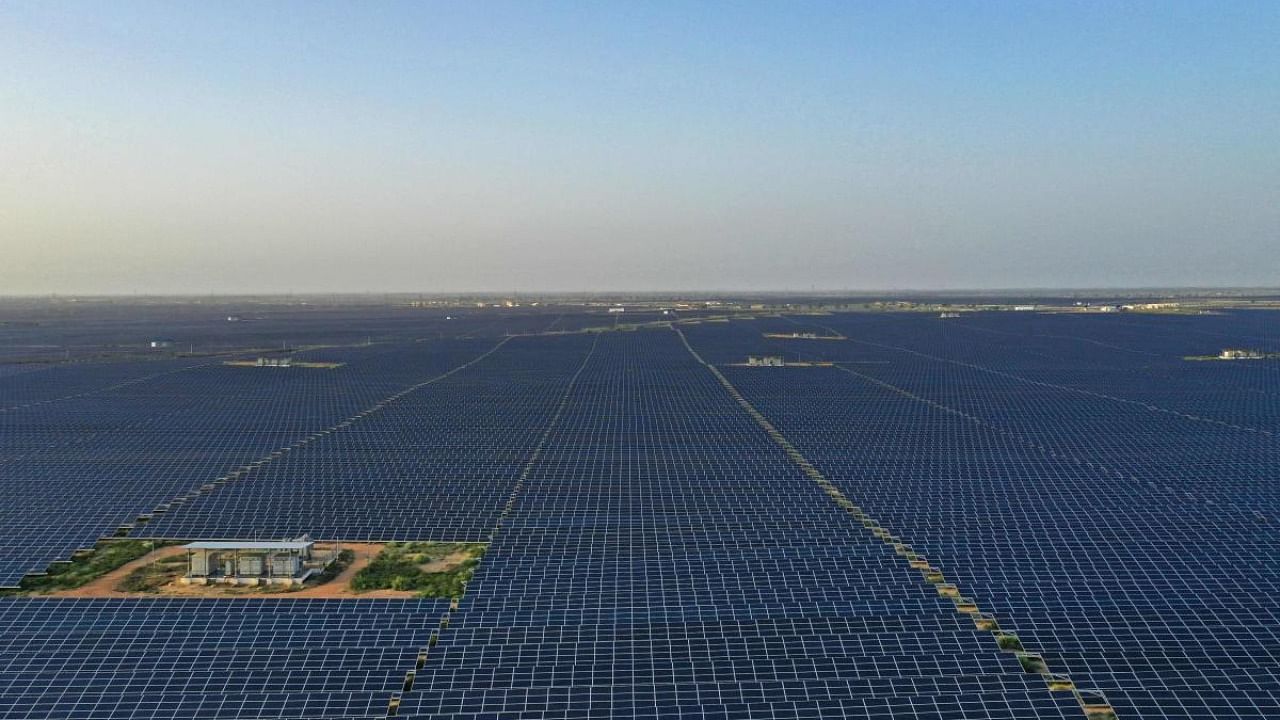
India has surprised the world by committing to achieving Net Zero by the year 2070. The target, announced by Prime Minister Narendra Modi on November 1 during the ongoing annual UN climate change conference COP26 in Glasgow, has been hailed as a milestone in the world's efforts to reduce global warming and avert the catastrophe of climate change. But what exactly is Net Zero and how will India achieve it?
What is Net Zero?
Net Zero is a state in which emissions caused by humans do not lead to any accumulation of earth-warming greenhouse gases in the atmosphere, according to a report by the United Nations' Intergovernmental Panel on Climate Change. In other words, the amount of greenhouse gases (carbon dioxide, methane, nitrous oxide, etc) produced will be equal to the amount that can be removed from the atmosphere. Net Zero will ensure that global warming is limited to 1.5°C above pre-industrial age levels.
How are greenhouse gases removed from the atmosphere?
There are a few technologies but none looks promising when it comes to scale-up. While there are carbon sinks like forests, soil and ocean, efforts are under way to create engineering processes known as carbon dioxide removal (CDR). The most well-known CDR technology is carbon capture and storage. There are two types of CCS: Direct Air Carbon Capture and Storage, and Bioenergy with Carbon Capture and Storage. None of the technologies is currently available commercially. But there is hope that sooner or later, scientists would be able to come out with safe, cost-effective and sustainable methods. Until then, nations should aim to minimise greenhouse gas emissions.
Why is India's 2070 Net Zero target such a big deal?
Before the climate change conference, there was pressure on India, the world's third-largest polluter, to commit to Net Zero. India was hesitant because its energy needs are growing as it tries to remove poverty and meet the needs of an aspirational population. Fifty-nine countries, representing 54% of global greenhouse gas emissions, have so far set Net Zero targets. Among them are the world’s two largest emitters: the USA (2050) and China (2060). Some experts, however, believe that the 2070 target is plain vanilla whereas more worthwhile action could be seen on the four other short-term targets that Modi announced.
What are the other new climate targets?
By 2030, India will (1) increase its non-fossil fuel energy capacity to 500 gigawatts; (2) meet 50% of its energy requirements from renewable sources; (3) reduce its total projected carbon emissions by one billion tonnes; and (4) bring down the carbon intensity of its economy to less than 45%.
Can these targets be achieved?
They can be but need overhauling of the electricity, transportation and construction sectors. For instance, India’s power requirement in 2030 is projected to be 2,518 billion units and if the country targets to meet 50% of its needs from renewable energy, the installed capacity will have to increase from the planned 450 GW to 700 GW. If hydroelectricity is considered a part of renewables – as it is considered globally – then India will need to increase new renewable capacity to 630 GW. This is definitely achievable.
Further, to reduce carbon intensity by 45%, India will have to take up enhanced measures to reduce emissions from transport and other energy-intensive sectors, especially cement, iron and steel, non-metallic minerals and chemicals. It would require India to augment public transport in cities and improve thermal efficiency of the buildings.
Does India have enough money to achieve these targets?
Not really and that's why the prime minister asked rich nations to enhance their commitments on fund flow and tech transfer. The track record of the rich nations, however, is not good. The 2009 promise of giving away $100 billion annually by 2020 has not materialised so far and most of the money came to resource-poor countries as “loan” rather than “aid”.
Watch latest videos by DH here:
